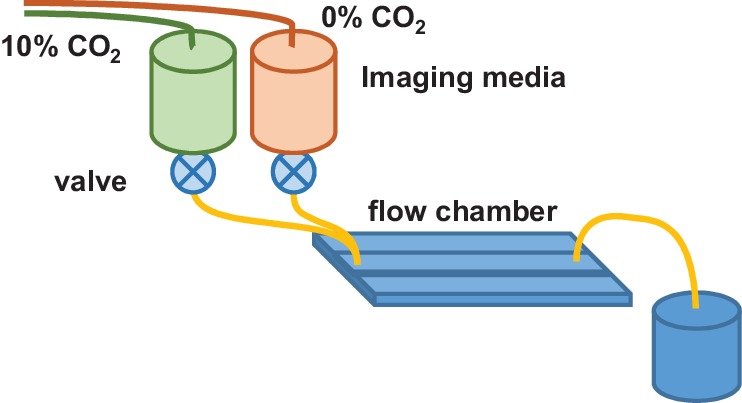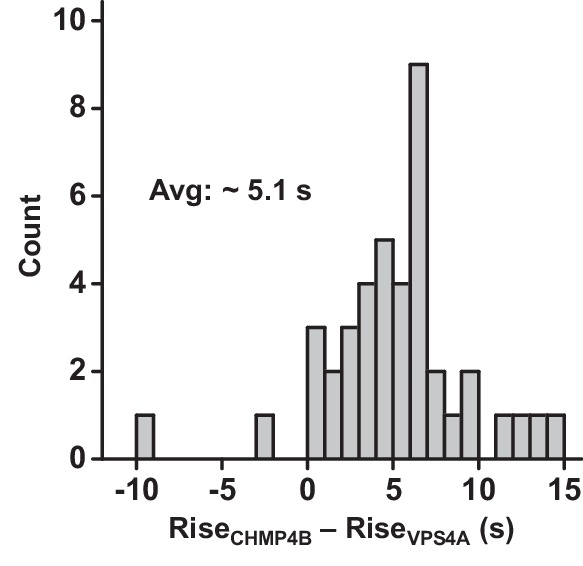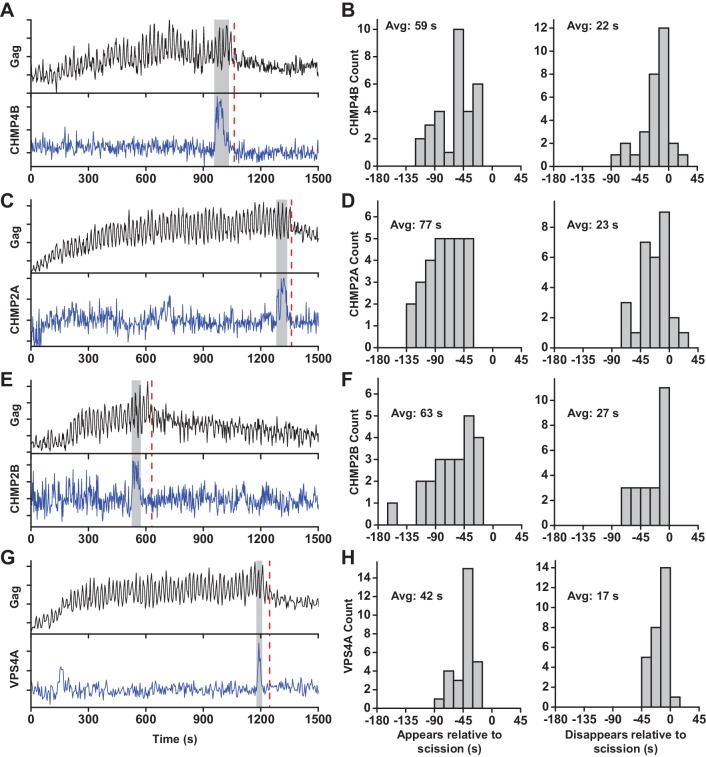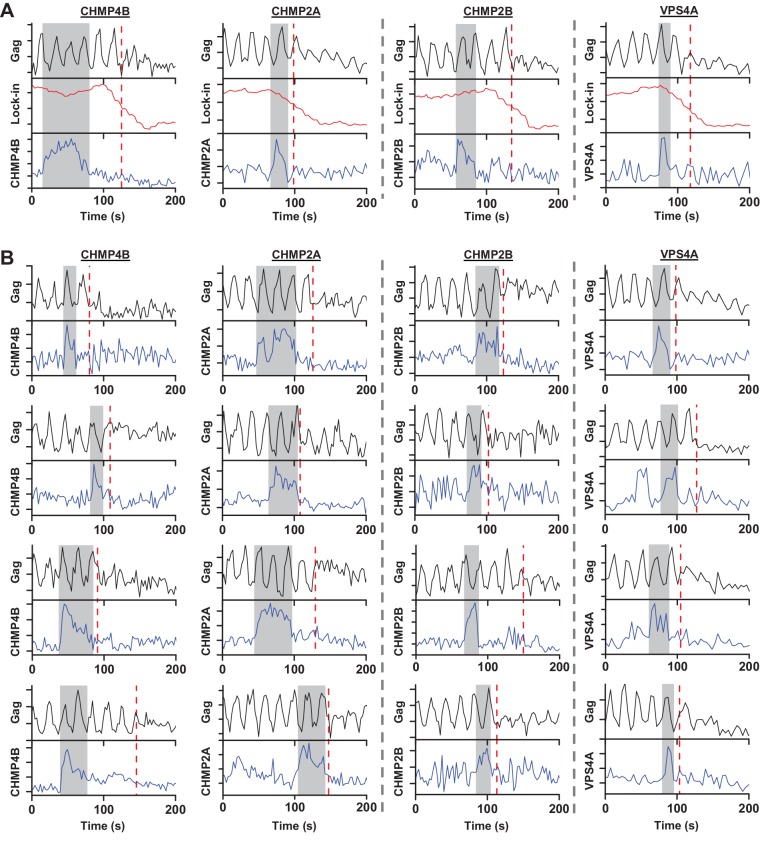Figure 1. ESCRT-IIIs and VPS4A transiently recruited prior to scission.
(A) Example trace of Gag-pHluorin assembling into single VLP while the pCO2 in the imaging media was repeatedly switched between 0% and 10% every 10 s. Moment of scission is indicated by red dashed line. CHMP4B-mCherry was temporarily recruited (indicated by grey zone) to the site of VLP assembly following the loss of pH modulation sensitivity. (B) Histograms of appearance and disappearance of CHMP4B prior to scission. (C-H) Example traces and histograms of appearance and disappearance, relative to scission of the VLP, for mCherry-CHMP2A (C and D), mCherry-CHMP2B (E and F) and mCherry-VPS4A (G and H).
Figure 1—figure supplement 1. Flow chamber configuration for ESCRT-III assisted membrane scission studies.

Figure 1—figure supplement 2. Example traces of scission relative to recruitment of ESCRT-III or VPS4A.
Figure 1—figure supplement 3. Knockdown of CHMP2A or CHMP2B by siRNA.
Figure 1—figure supplement 4. CHMP4B was recruited prior to VPS4A.




